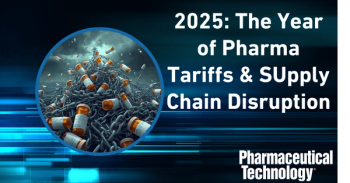
Supply-Chain Challenges and Innovations in Pharma Packaging
Innovations address sustainability, serialization, and supply-chain issues.
From a business perspective, solid-dose manufacturers are outsourcing more production to contract development and manufacturing organization (CDMOs). Industry stakeholders also are coping with dramatic increases in the costs of raw materials and overcoming supply-chain constraints.
Rising costs, tight supplies, and long lead times are not uncommon today for both product ingredients and packaging materials. “The COVID-19 pandemic has wreaked havoc in the manufacturing of solid-dose bulk [drugs],” reports Pat Elvin, president of Reed-Lane, a privately held company specializing in pharmaceutical contract packaging. He explains, “This shortage of supply is due to an inability to obtain all ingredients and the lack of employees to operate these facilities at this time.” Paperboard and paper stock for labeling have been in particularly short supply. “Therefore,” he says, “when we look at the private-label market, we are seeing that companies are holding their supply-chain inventory extremely tight, and packaging operators are seeing more line changeovers to accommodate smaller and shorter packaging runs.” An agile supply-chain approach and production schedule are needed.
PCI Pharma Services is focusing on supply-chain tools to improve its ability to respond to changes in the market. Its goal is to enhance productivity and provide instant feedback to all stakeholders by better resource management and material allocation. The CDMO, which offers packaging and clinical trial services, uses the pci | bridge digital platform to share real-time insights, customizable reports, and digitized workflows to ensure all factors are included in a connected digital supply chain. “We also leverage digital tools within our manufacturing environment to make client supply chains more agile and create supply-chain efficiencies, optimized inventories, and predictive analytics,” says Justin Schroeder, global vice-president, Product Development and Commercialization, PCI Pharma Services.
Packaging innovations
To meet sustainability, serialization, and supply-chain issues, CDMOs are expanding packaging material options; adding or upgrading equipment, lines, and technologies; and optimizing operations and supply chains. Adare Pharma Solutions, for example, has added capacity and is completing validation of a high-speed blister packaging line with integrated cartoning and palletizing. Expected to be operational this year, the line will handle traditional solid-dose formats as well as orally dissolving tablets. Other improvements at Adare Pharma Solutions include an expanded vault for products restricted by the US Drug Enforcement Administration and the startup of high-speed stick-pack equipment for filling powders and granules. The company also is on schedule to implement full-scale aggregation capability before the end of 2022, well ahead of the November 2023 DSCSA deadline.
On the materials side, innovations include new materials, barrier substrates, and more sustainable substrates. ACG Films and Foils, for example, has developed high-barrier polyvinylidene chloride (PVDC) films, more sustainable alternatives to PVC, and a five-layer cold-form foil.
Another alternative to PVC is the AmSkythermoformblistersystem from Amcor. Based on polyethylene (PE), the printable material contains no vinyl or aluminum foil and is compatible with PE recycling streams. Barrier properties are said to be equivalent to a 120-gram coating of PVDC. Processability is equivalent to existing materials, and structures can be child-resistant (1).
SÜDPACK Medica also has developed a more sustainable blister film that is a coextruded polypropylene (PP) designed to replace PVC/PVDC blister materials. “PP as a raw substance basis naturally provides an outstanding steam barrier,” noted Michael Hermann, head of Research & Development at SÜDPACK Medica, in a press release statement. The coextrusion technology offers the potential for enhanced barrier properties and closed-loop material management (2).
With counterfeiting an ever-present concern, Holographyx is working with Hazen Paper and Uhlmann Packaging to develop, test, and launch its Holo-Blister technology. Recently granted patents in both the US and Europe, the Holo-Blister technology enables conventional heat-seal blister packaging equipment to cost-effectively apply custom holograms to the back of blister packs. Holo-Blister holograms are designed to only be visible behind each pill/capsule cavity on the back of each blister pack, providing instant verification of authenticity, while leaving space around the recess to print dosage and marketing information (3).
References
1. Amcor, “AmSky Thermoform Blister System,”
2. SÜDPACK Medica, “SÜDPACK Medica Presents PP Films,” Press Release, Oct. 28, 2021.
3. Holographyx, “Holo-Blister Is a New Anti-Counterfeiting System for Pharmaceutical Blister Packs that Has Just Been Awarded Patents in Both the US and Europe,” Press Release, Feb. 23, 2022.
Newsletter
Get the essential updates shaping the future of pharma manufacturing and compliance—subscribe today to Pharmaceutical Technology and never miss a breakthrough.




